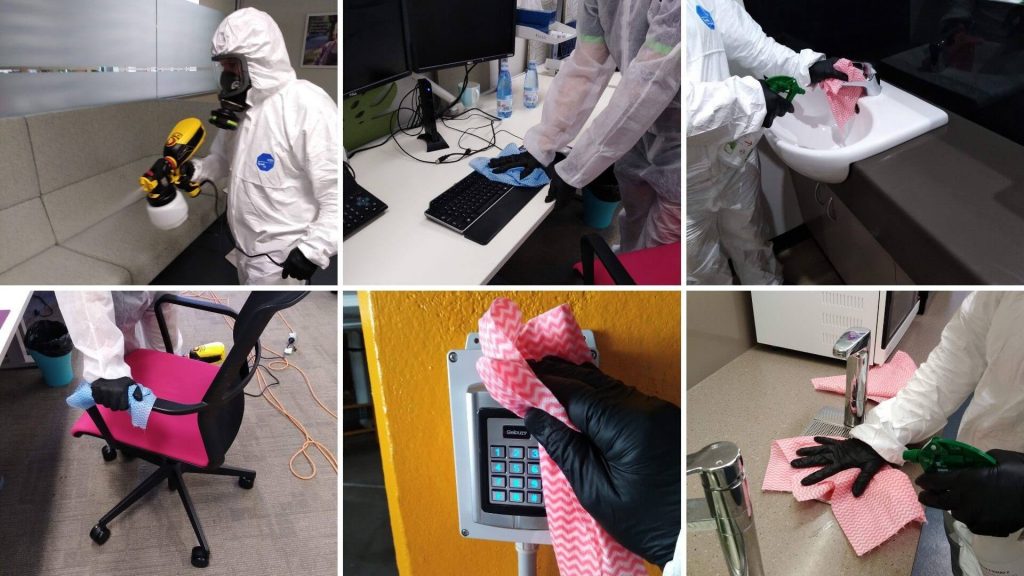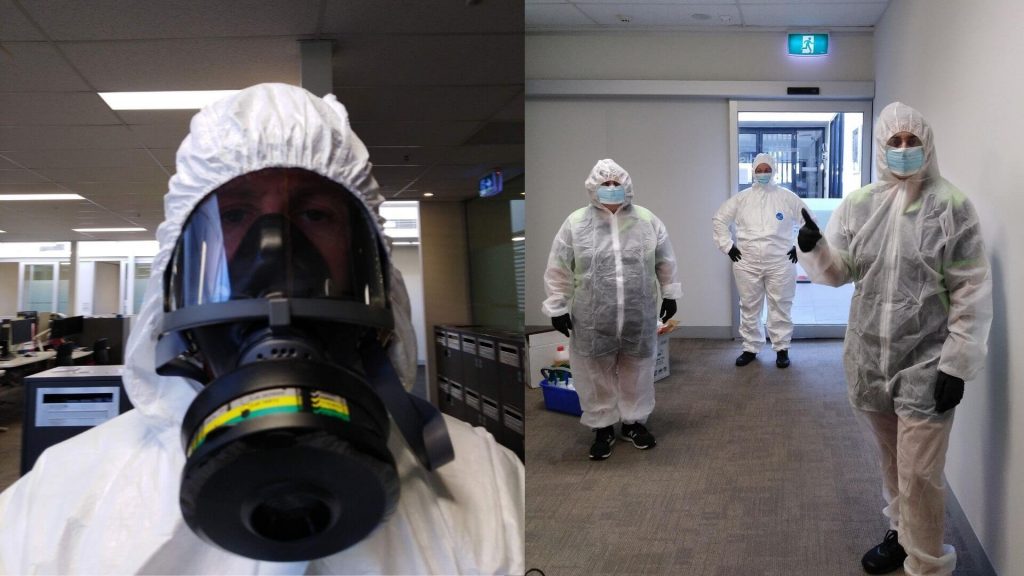
Well done, Australia – we’ve ‘flattened the curve’ and numbers of new COVID_19 cases remain optimistically low. We still have some way to go in the coming weeks and months and must remain vigilant with our personal hygiene and social distancing, but we’re now enjoying the easing of restrictions around the country!
Some industries (like cafes and restaurants) have already begun returning to work and, according to the Government’s Roadmap to Recovery, most businesses will return by July. Despite the good economic news; we have to remember that contracting the highly contagious coronavirus remains a very real health threat and physical distancing and hygiene requirements will continue to be a part of our lives for some time yet – particularly in larger, publicly accessed and shared spaces.
Now is the time to get ready; with about a month to review and update your design and layout and/or processes and procedures, there’s lots to be done in order to become a COVIDSafe workplace!
You can find lots of free information from Work Safe Australia and the World Health Organisation (WHO) about returning to work and preventing the spread of coronavirus and managing any outbreaks. At Cloverdale, we’re regularly reviewing the expert advice and briefing our team to ensure we’ve got all the latest information, processes and tools to help keep our clients and their premises safe and healthy!
COVID-Cleaning – Preventative vs Reactive
When it comes to COVID-cleaning your business, there are two options – Preventative or Reactive. Preventative cleaning is usually performed before returning to the workplace and is designed to significantly mitigate the risk of spreading Coronavirus. It provides your staff, clients and customers with peace of mind, and a sense of safety and security in coming back. Regularity is the key and preventative cleaning should continue and be done fairly regularly over the coming months, to ensure you can maintain the highest possible cleanliness and hygiene standards.
In contrast, Reactive cleaning is often performed after a confirmed case or outbreak of a virus like influenza or coronavirus. This type of clean requires a full combination of cleaning, disinfecting/ sanitising, deep cleaning and bio-cleaning services and is usually completed outside of trading hours or when the business is closed!
Remember touchpoint cleaning and hand hygiene (hand washing and sanitising) should be central to your overall workplace health and safety strategy, with additional out of hours cleaning services employed to support and mitigate risk.
What Type of Clean do I need?
There are three types of cleaning services to choose from – they can be completed as stand-alone or packaged together, depending on your company size and needs:
1. Regular Cleaning – day-to-day touchpoint cleaning will remove dirt and grime and includes wiping down of high touch surfaces with our Hospital Grade disinfectant to kill germs and bacteria. We can also supply hand sanitiser, soap, paper towels and toilet rolls! In these COVID_19 times we recommend temporarily increasing the frequency of cleaning.
2. Deep Cleaning – a more thorough less frequent cleaning service, including the scrubbing of hard surfaces like bathroom floors to remove built-up dirt and grime, and wiping down of ALL surfaces that get regularly used or touched with disinfectant (this should be performed routinely throughout the year even beyond COVID_19 – read about our deep cleaning HERE)
3. Bio-cleaning – a combination of the cleaning services mentioned above, plus fogging or misting where we spray a solution that settles and remains on the surface – usually done as a reactive measure but becoming more popular now as a preventative cleaning service due to COVID_19. (read about our bio-cleaning services HERE and watch the video below)
We use Hospital Grade disinfectant, containing live bacteria that continues to neutralize viruses for hours after application
COVID-Cleaning Workplace Checklist:
Most people don’t know just how many high-touch surfaces and items there are in any given room or building… Below is a handy checklist ofsix priority areas within commercial buildings that need to be kept clean and germ free, in this brave new world:
- Foyers and Entrances:
Access Points – locks and door handles, alarms, keypads & light switches
Elevators/ Lifts – external/ internal buttons, doors, walls, floor & railings
Furniture – armchairs, chairs, desks & tables
Larger areas – pillars, screens, floors, carpets, rugs & walls
- General workspace:
Furniture – chairs, desks and tables, cupboards & shelves
Electronics – keyboards, phones, computer screens & photocopiers
Larger areas – doors, partitions, screens, floors, carpets & walls
- Kitchens:
Furniture – benches, tables, chairs & stools, cupboard doors & handles
Electronics – fridge, dishwasher, microwave, toaster, kettle & coffee machines
Cups/ Mugs, Dishes & Cutlery – use/ get a dishwasher, no hand washing!
Larger Areas – splash-backs, tiled surfaces, floors & walls
- Bathrooms:
Hygiene – hand wash, sanitiser, paper towels & toilet paper
Porcelain – in & around toilets & urinals, basins/ sinks & tiled surfaces
Silverware – tap handles, toilet & hand dryer buttons
Larger areas – doors, tiled surfaces, floors and walls
- Meeting & Board Rooms:
Furniture – chairs, tables, cupboards, shelves & window blinds
Electronics – speaker phones, computers, keyboards, remotes & control panels
Larger areas – doors, floors, carpets & walls
- Reception & Waiting Rooms:
Reception – door handles, sneeze guards/ screens, bells, buttons & phones
Furniture – armchairs, chairs, tables, cupboards & shelves
Soft Items – magazines, toys, books & rugs
Larger areas disinfected – doors, floors, carpets & walls
Remember every workplace and building is unique! The items in the checklist above are a guide only and based on a traditional office-style building. Some items may not be applicable to your business or there may be additional considerations for particular industries – such as individual retailers or chains of retailers, malls or shopping centres, colleges or universities and lots more…
Contact us for an obligation free assessment and quote that is tailored to your specific traffic and risk factors and needs.
